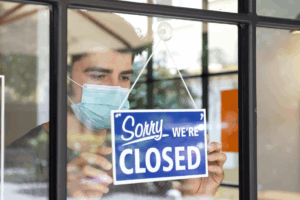Eight petroleum-based dyes linked to health risks will be removed from the U.S. food supply.
The U.S. Food and Drug Administration (FDA) has unveiled plans to phase out eight synthetic food dyes, following a joint announcement with Health and Human Services Secretary Robert F. Kennedy Jr. The dyes, derived from petroleum, have long been a concern for health experts, and this move signals a significant shift in the nation’s approach to food additives. Over the coming months, the FDA will revoke authorization for two of the dyes—Citrus Red No. 2 and Orange B—and work with the food industry to eliminate six other artificial colors.
FDA Commissioner Dr. Marty Makary expressed strong concerns about the health effects of these dyes, particularly their potential links to hyperactivity, obesity, cancer, and other health issues. “For the last 50 years, American children have increasingly been living in a toxic soup of synthetic chemicals,” Makary said during the announcement.
The HHS and the FDA announced on Tuesday a series of measures to phase out eight artificial food dyes and colorings from America’s food supply by the end of next year. https://t.co/qOoN5o3FNw
— ABC News (@ABC) April 22, 2025
The eight dyes to be phased out include Red No. 40, Yellow No. 5, and Blue No. 1, which are commonly found in products such as candy, processed snacks, and sodas. The dyes have long been used in food products to enhance their color but have raised red flags due to their possible negative effects on health. While some studies have shown potential correlations between these chemicals and various health problems, a definitive link remains under scrutiny by the FDA.
Kennedy, a longtime advocate for reducing toxic substances in food, stressed the need to shift away from synthetic dyes. “If they want to add petroleum, they should do it at home, not feed it to the rest of us without our knowledge or consent,” he remarked.
The FDA plans to speed up the transition to natural alternatives, with the agency approving four new natural color additives soon and exploring additional options for future use. The industry’s cooperation will be vital to the plan’s success. However, Kennedy noted that while food companies are on board, a formal agreement to phase out the dyes has not yet been established.
Several companies have already reached out to the FDA and Kennedy’s office to inquire about the upcoming changes. Makary emphasized that while they are open to voluntary industry collaboration, they are also prepared to explore all regulatory avenues to ensure compliance.
In addition to the synthetic dye phase-out, the initiative also calls for increased transparency, with the FDA and HHS planning a public information campaign on food additives. Kennedy indicated that this could be the first step in a broader push to reduce other harmful ingredients, such as sugar, from the food supply. “We need to address these issues head-on, and if a foreign country were doing this to our children, we would take action immediately,” said Dr. Mark Hyman, a prominent health advocate supporting the initiative.
As the phase-out begins, food companies are expected to begin transitioning toward natural alternatives, such as fruit and vegetable-based dyes.
FDA Commissioner Marty Makary outlines push from the HHS to phase out the remaining artificial food dyes from America’s food supply within two years.
“For companies that are currently using petroleum-based red dye, try watermelon juice.” https://t.co/3G7imJs7qL pic.twitter.com/DoXdkKK1vo
— ABC News Politics (@ABCPolitics) April 22, 2025











